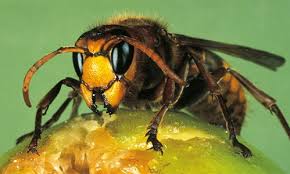

KIRO 7 – September 23, 2020
PULLMAN, Wash. — Researchers at Washington State University say they have predicted how and where the Asian giant hornet – also dubbed the “murder hornet” — could spread and find ideal places to live in the US and across the world.
The team found that if the hornet gets a foothold in Washington state, it could spread down much of the West Coast.
The hornet could also find habitat throughout the eastern seaboard and parts of Africa, Australia, Europe and South America if humans accidentally transport it.
Researchers say the predictions emphasize how important it is to stop the large hornets in Washington before they spread.
Scientists from the state Department of Agriculture and WSU entomologists examined hundreds of records from the hornet’s native range in Japan, South Korea and Taiwan, then used a set of ecological models and climate information to predict where it could likely live across six continents.
“We’re making an educated guess on how fast and far these insects can move, their rate of success in establishing a nest, and offering different scenarios, from least bad to worst. No one has done this before for this species,” said WSU entomologist Javier Illan.
Experts say the Asian giant hornet is a significant threat to Western honey bees. In late summer and fall, hornet colonies attack beehives, destroying entire colonies.
The hornets are most likely to thrive in places with warm summers, mild winters and a lot of rain. High heat will kill them, so their best habitats are in areas with a high temperature of 102 degrees.
Giant hornets could live along much of the US west and east coasts, adjacent parts of Canada, much of Europe, northwestern and southeastern South America, central Africa, eastern Australia and most parts of New Zealand, WSU said in a news release.